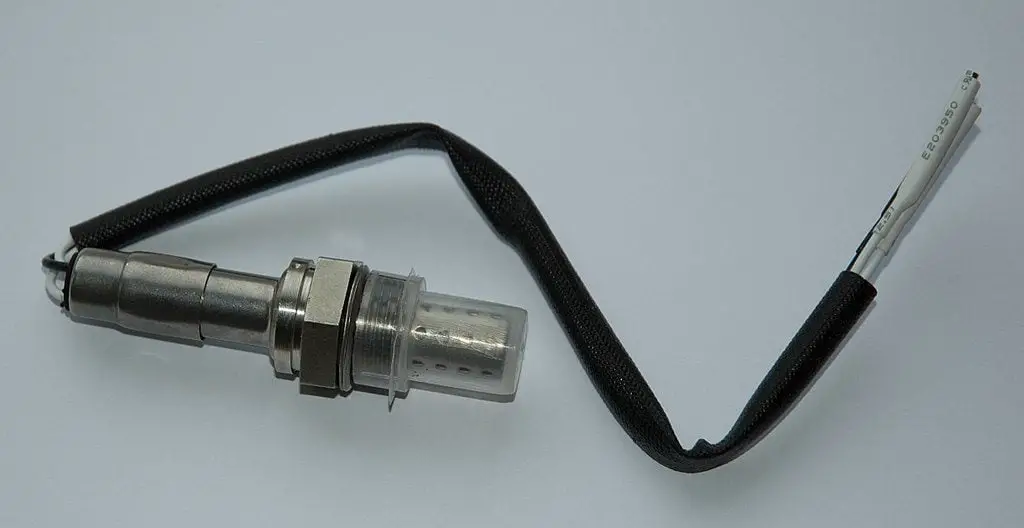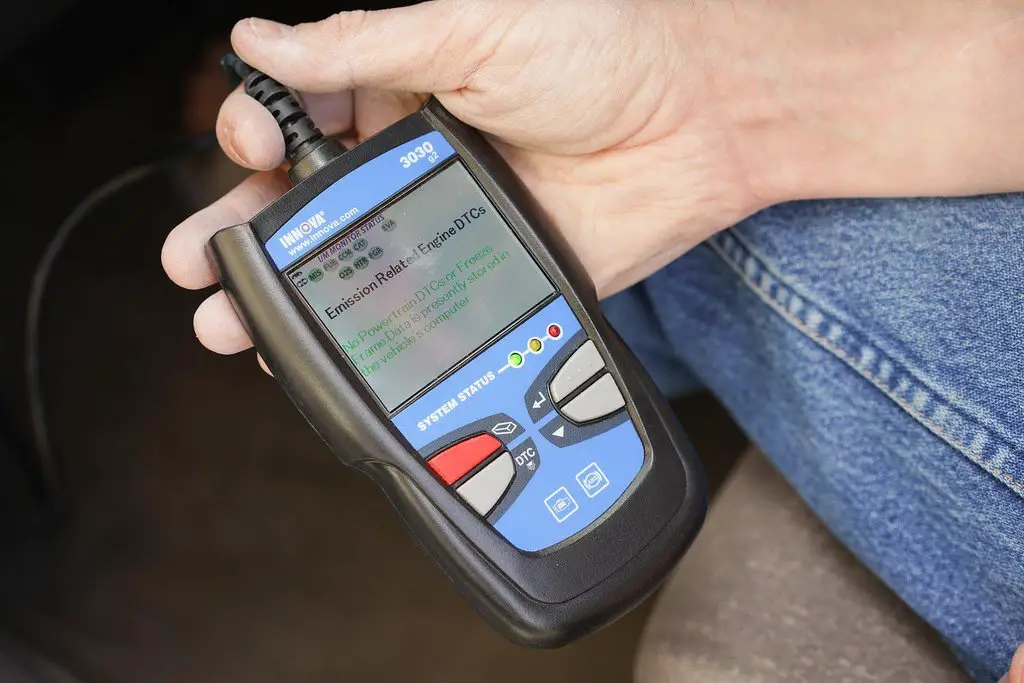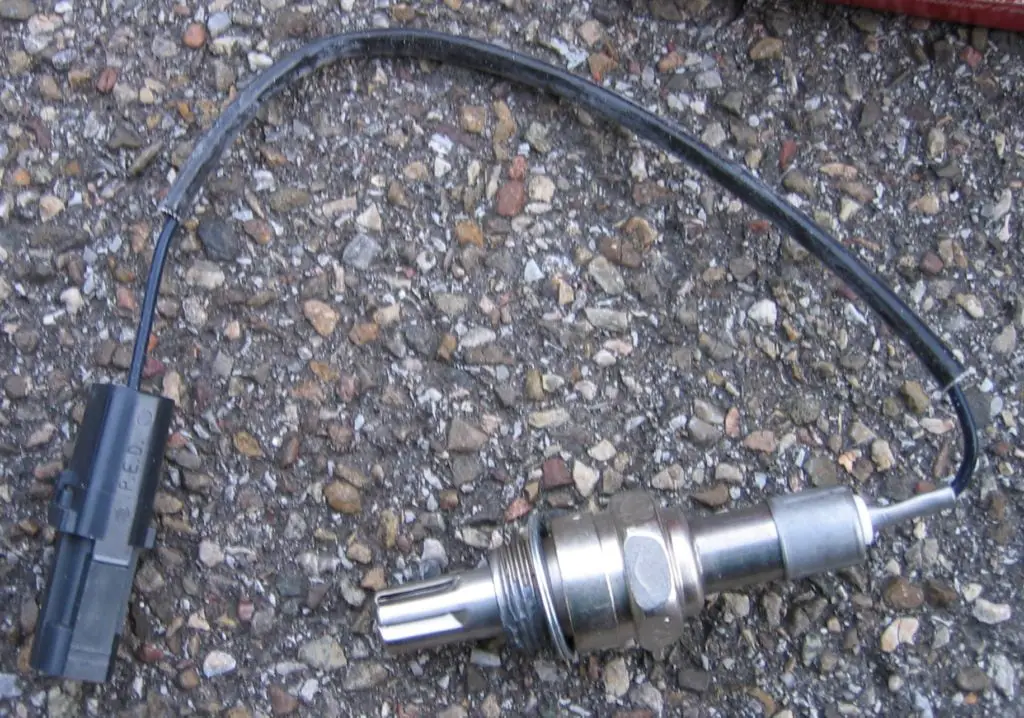Table of Contents
When it comes to a bad O2 sensor, it can pop up during emission and smog tests. Over half of the issues are a result of a bad oxygen sensor. This begs the question: how can I do this testing on my own?

Credit: commons.wikimedia.org
How to Test an O2 Sensor with an OBD2 Scanner?
OBD2 Scan tools are a great way to test for a faulty O2 sensor. With easy-to-use controls and a great user’s manual, you will be well on your way to figuring out where the bad O2 sensor is coming from.

———
1. Step 1
When figuring out how to test an oxygen sensor, you need to insert the scanner into the diagnostic link connector (DLC). Each DLC comes with 16 pins that are similar to the shape of a triangle. If you can’t find your vehicle’s DLC, do not fret.
There are resources online or in the owner’s manual to help you along. Then, you will be able to test bad oxygen sensors.
2. Step 2
After the DLC has been connected, it is now time to turn on the car’s engine. This way, the scanner will speak with the onboard system. However, make sure you do not turn on the car’s engine completely, just the engine’s ignition.
At this point, if the scanner does not turn on, restart the device and reconnect it, if need be. Shaking it might even do the trick. When it does work, type in your id number for the vehicle, while giving the make and model of the car, too.
3. Step 3
When the scanner is up and running, head over to the “Codes” or “Trouble Codes” menu.
4. Step 4
From here, you can troubleshoot any system you want. You will see at least 2, but possibly more, codes on the screen. The codes will either say “active codes” or “pending code,” which are the most common of the codes. Other codes include current, past, or potential.
When an active code occurs, this keeps the check engine light vibrantly on your car’s dashboard. A check engine light means there is a problem, and it needs to get fixed before the light will go off.
On the other hand, a pending code is a different story altogether. A pending code means that the emission control system had a failure. If it fails again, the check engine light will come on, and it will be an active code.
5. Step 5
The last step involves interpreting the code itself. When a scanner is used to figure out the problem, this will help you figure out the code. If you do not know what specific code is, you can always search the Internet for more information.
When online, you can check out other codes, just in case you have to understand them down the road.
O2 Sensor: What is it for?
Now that you know how to check an O2 sensor with a scanner, it is time to dive into what an O2 sensor is. Placed in the exhaust, an oxygen sensor is used to give a measurement between the oxygen in the gas exhaust and the oxygen in the air. Some people think that it measures just oxygen, but that is not truly accurate.
Along with this ratio measurement, it also sees how well the catalytic converter is working. An adjustment can be made to understand its efficiency when the ratio is found, voltage workflows to the O2 sensor.
When the information is sent to the central processing unit (CPU), adjustments can be made from there. The CPU configures the sensors back to standard readings, and emissions are reduced in the process. You can expect a vehicle that will help, and not hinder, the environment.
Make sure not to tamper with an O2 sensor. Doing this can cause negative emission readings, and your vehicle could be damaged, too. For example, tampering can lead to a damaged catalytic converter, which could stop your car altogether.

An oxygen sensor is used to give a measurement between the oxygen in the gas exhaust and the oxygen in the air
Credit: Wikimedia Commons
Types of O2 Sensors
There are a few oxygen sensors that you should be aware of. Sensors start as being unheated or heated. But, in this day and age, most sensors are heated in the 21st Century.
You can find unheated sensors in vehicles before 1990. Over time, though, a lot of sensors have been replaced for the heated variety. The rule of thumb is you should replace these sensors every time you put 30,000 to 50,000 miles on your vehicle.
With heated sensors, these come standard in cars that were made in 1990 or newer. Heated sensors last a lot longer, and can be replaced every 60,000 miles. Some even replace these sensors after 90,000 miles.
Regardless of mileage, sensors take a beating. They should be replaced to avoid any problems with your vehicle.
What Causes an Oxygen Sensor to Fail?
As stated earlier, an oxygen sensor fails for a few reasons. First, these sensors can breakdown over time because of harsh conditions. Secondly, sensors test two times before a failure, and then a check engine sensor update is given
Bad O2 Sensor Symptoms
There are a few things that show your oxygen sensor is not working anymore. First, a foul odor might be the first thing you notice. This is a strong smell that will be unpleasant to the nose. If the problem is not resolved immediately, your interior may start to smell, too.
When your check engine comes on, a sensor may be wrong. This does not necessarily mean the sensor is bad, but it is an excellent place to start.
The last two symptoms involve poor gas mileage and bad performance from your vehicle. Do you have to fill up more than usual? This could be a problematic sensor that is richly mixing your fuel and air.
If your vehicle is not performing like new, you may see a weaker acceleration or stalling of the engine. Even when you idle, there may be a problem.
When to Replace O2 Sensors
After you have learned how to test an oxygen sensor, it may be time for a replacement. With a scanner tool, you can at least figure out the issue, and then decide what to do from there.
FAQs (Frequently Asked Questions)
Q-1: Can a bad O2 sensor cause poor acceleration?
If poor acceleration happens, you definitely should check your oxygen sensor first.
Q-2: How much does it cost to fix O2 sensors?
This question depends on if you are doing the work, or you are having a mechanic do it. If you want to fix it yourself, sensors cost between $20 and $100. A mechanic will charge you anywhere between $100 and $500.
Q-3: Can a bad O2 sensor cause gas to smell?
A bad O2 sensor can cause an awful smell coming out the exhaust.
Q-4: Is it alright to drive with a bad oxygen sensor?
This is not recommended because you should get it fixed as soon as possible.
Q-5: Can a bad O2 sensor cause shaking?
Yes, a bad O2 sensor can cause shaking, and a rough feel when driving.
Q-6: Will a bad O2 sensor cause sputtering?
A damaged O2 sensor can put too little or too much fuel causing sputtering of your engine.
Q-7: Will a bad O2 sensor fail emissions?
Yes, most poor O2 sensors will fail an emissions test.
Q-8: Can a bad O2 sensor cause jerking?
Erratic jerking may come out of nowhere with a bad O2 sensor.
Q-9: Can a bad O2 sensor cause a car to run rich?
Because the sensor isn’t working correctly, gas may run too rich in your vehicle.
Q-10: Can a bad O2 sensor cause a car to cut off?
Yes, your vehicle may cut off at any time.
Read more: 7 Signs of Automatic Transmission Problems
